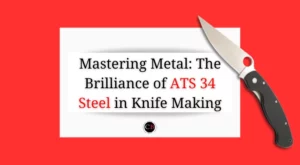Ceramic knives are a relatively new addition to kitchens everywhere. These knives are durable and sharp, and many people find them to be safer than traditional knives. However, not all ceramic knives are alike.
In this blog post, we’ll take a look at how safe are the ceramic knife and ceramic knives pros and cons. We will give you some tips on how to use and care for your ceramic knife.
Ceramic blades are mostly made of zirconium dioxide. Zirconium dioxide is extremely resistant to acids when it has been thermally pretreated. Ceramics made from this material are harder and wear out much more slowly than hardened steel.
In this article:

Are ceramic knives safe?
When it comes to safety, ceramic knives are considered safe to use, as long as they are used properly and with caution.
The blade is made of zirconium dioxide, which is extremely hard and very sharp.
This makes the knives more brittle than metal knives, which means they can chip or break if mishandled.
Ceramic knives should only be used for slicing vegetables, boneless meats, and fruits.
They should not be used for chopping, as this could cause the blade to chip or break. Also, never use ceramic knives to cut raw meats, as the blade may chip and the bacteria from the raw meat could contaminate the ceramic knife and cause food poisoning.
Ceramic knives are considered safe for use in food preparation. They are made from non-toxic, inorganic materials and do not contain any harmful chemicals that could leach into food.
It’s worth mentioning that ceramic knives may contain small amount of lead or cadmium if the ceramic material is not food-grade.
So it’s important to ensure that the ceramic knife you purchase is made from food-grade materials and that it is free of lead and cadmium.
Related: Steel knives vs Ceramic knives
Advantages of ceramic knives
Ceramic knives not only stand out for their attractive design and appearance, but also for being able to unseat traditional steel knives thanks to their versatility. In addition, they have a number of features with which they offer great performance:
- The knife blade is made of zirconium oxide powder. This makes it a highly wear-resistant kitchen utensil and the cutting edge remains perfect for much longer than other knives. By this we mean that the ceramic does not contain metal ions, so it will never rust.
- How are ceramic knives sharpened? Ceramic knives are sharpened with diamond discs to achieve an extremely sharp blade, which allows you to make fine cuts in a simple and precise way. In turn, once sharpened, a ceramic blade can last for years before needing to be re-sharpened.
- If you try one of these knives with a ceramic blade, you will notice that it stands out for its lightness, since this material is lighter and weighs less than a steel blade.
- The handles of ceramic knives offer great ergonomics, so they can be handled comfortably, thus minimizing the risk of cuts.
- The ceramic blade of the knives is a non-porous material, so it does not accumulate dirt and does not retain the odor or taste of food.
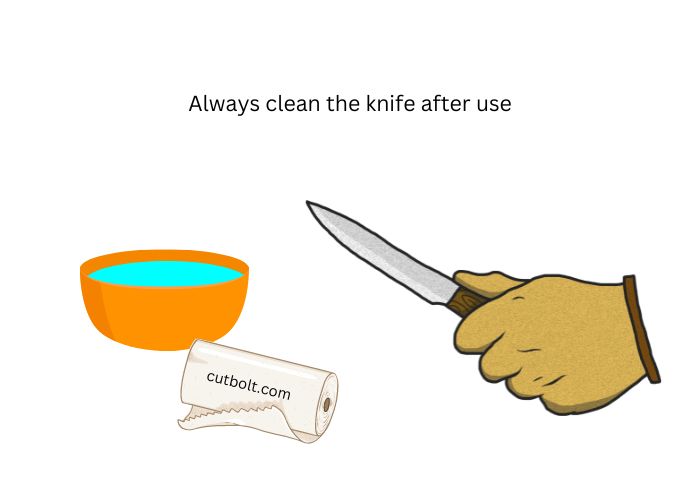
Disadvantages of ceramic knives
Ceramic knives are fragile because they are made of a material that is not as flexible as steel. For this reason, it is advisable to be careful with those foods that are cut. So what can you cut with a ceramic knife? It can be used to make thin cuts of boneless meat, soft cheeses, etc. Some other disadvantages are:
- Ceramic knives are not recommended for cutting meat bones or fish bones because the blade could break.
- Ceramic knives are not suitable to use on all surfaces. We advise you to always cut on a wooden or plastic cutting board because if you cut on a hard surface such as a granite or marble countertop, the ceramic blade of the knife could break.
- Do not be overconfident when cutting with this ceramic utensil, as its lighter, sharper blade can cause you to cut deeply if you are overconfident.
- Ceramic knives should not be put in the dishwasher because the pressurized water could cause them to collide with other utensils and scratch them. We also recommend storing them in a knife block.
- The ceramic blade of the knives must be sharpened with diamond machines, which is not common in homes, so you will probably have to resort to a domestic ceramic knife sharpener, which will not guarantee such a good sharpening.
- If a ceramic knife loses its edge, it is difficult to get it back to its original sharpness.
What are the best ways to use a ceramic knife for cooking
Ceramic knives are a great option for chefs who are looking for an alternative to traditional steel blades. They are extremely sharp and are capable of slicing through even the toughest ingredients with ease.
Ceramic knives have many advantages, including their lightweight design, rust-proof properties, and the ability to stay sharp for much longer than their steel counterparts. Additionally, they do not require sharpening as often as steel knives and are much easier to clean and maintain.
However, there are some drawbacks to using ceramic knives. They are not as durable as steel knives and can break easily if dropped or mishandled.
Ceramic knives are not dishwasher safe, so they should be hand-washed with a mild detergent and hot water. They also require a specific type of cutting board, as cutting them on a regular board can damage the blade.
When it comes to cooking with a ceramic knife, there are several best practices to follow. It is important to always use a cutting board that is specifically designed for ceramic blades.
It is important to keep the blade sharp by not using it to cut through bones or frozen items. Lastly, it is best to use a slow and steady chopping motion rather than a sawing motion, as this can reduce the risk of nicks and cuts. Following these tips will ensure that you get the most out of your ceramic knife.
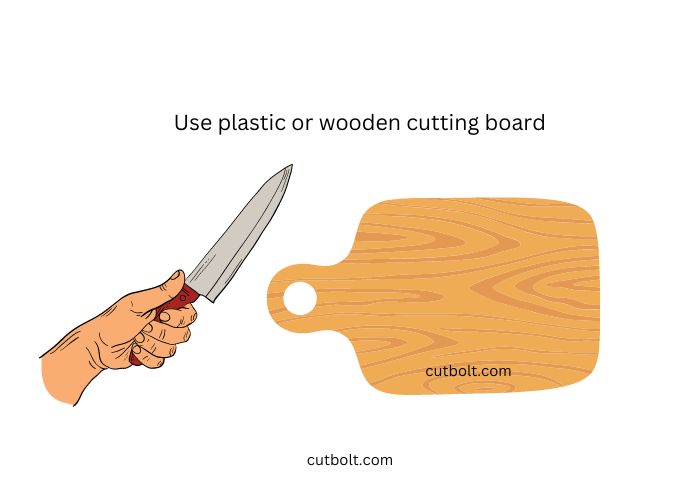
How to Sharpen a Ceramic Knife: Tips for Maintaining a Sharp Edge
Ceramic knives stay sharp much longer than stainless steel knives because they are much harder. Nevertheless, a ceramic blade becomes blunt after a long time and it is time to sharpen the ceramic knife.
Practically all manufacturers of high-quality knives offer this service – sometimes even free of charge as part of a lifetime guarantee. Especially high-quality knives are very hard and are better off in the hands of a professional.
With cheap ceramic knives, however, it can be worthwhile to sharpen the ceramic knives yourself – especially if you already have the necessary tools.
Sharpening a ceramic knife is a delicate task that must be approached with caution. The most important factor to consider is choosing the right tool.
- To sharpen the ceramic knife, hold the knife firmly and securely in your leading hand. It is best to additionally fix the blade with your thumb.
- The most important thing when grinding is to keep the correct angle constant. This is between 10 and 15 degrees for the tip of the blade. Now place the other hand near the cutting edge to additionally fix the blade and guide the knife in both directions at the specified angle over the sharpening stone.
- Once you can feel a small burr at the tip of the knife’s cutting edge, you can continue sharpening the center of the blade. To do this, pull the knife diagonally across the sharpening stone at a 60° angle. As soon as you can feel a ridge here as well, you can turn your attention to the last part of the blade.
- Depending on the size of the whetstone and knife, these steps may need to be repeated a number of times. If dust or debris settles on the grinder, you can blow it off after use or wipe it off with water. If you use water, you must always wipe the grinder dry, otherwise rust can quickly develop.
- Repeat the process for the spine of the blade.
Which cutting board to use with ceramic knife?
If you have chosen a stone or stainless steel worktop for your decorative kitchen, as we see more and more of in trendy kitchen stores, we advise you to use a cutting board. In plastic or good quality wood, there are many choices available to you. These cutting boards will protect your beautiful work plan, but also the blade of your knife.
Stored in one of the drawers of your built-in kitchen, were you thinking of using one of your porcelain plates to cut your avocado cleanly with your ceramic knife? Avoid! Porcelain can also damage the edge of your blade. Then, you risk damaging your pretty porcelain.
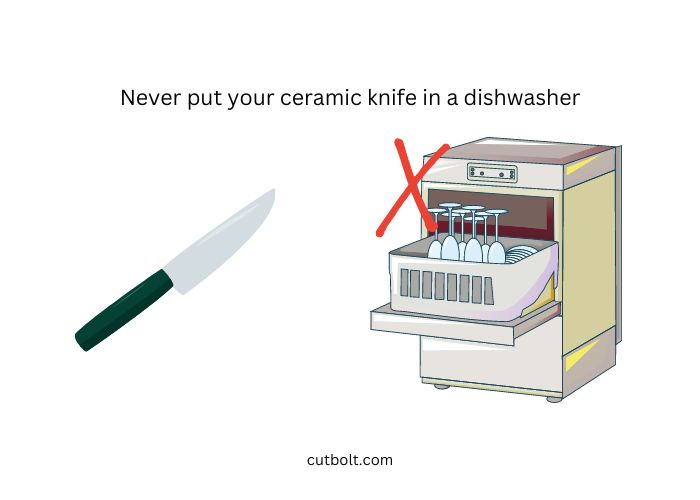
Are ceramic knives dishwasher safe?
Ceramic knives are also not typically dishwasher safe, as the extreme temperatures and harsh detergents can damage the blade. Instead, they should be washed by hand with warm, soapy water.
In terms of maintenance and sharpening, ceramic knives generally require more frequent sharpening than metal knives, as their edges can quickly become dull.
A ceramic sharpening rod should be used for this purpose, as it can safely and effectively sharpen the blade without damaging it.
How to store a ceramic knife
Ceramic knives are a popular choice for cutting tasks in the kitchen due to their sharp, long-lasting blades. They are much lighter than traditional steel blades, and they do not rust, corrode, or conduct electricity like steel knives. However, due to their delicate nature, there are certain precautions to take when storing a ceramic knife.
Firstly, ceramic knives should be stored in a protective sheath or in a block of wood. This will help to prevent chipping or cracking of the blade, which can occur due to contact with hard surfaces.
Remember, it is important to store ceramic knives away from other kitchen utensils, as the blade may be damaged by contact with metal knives. Furthermore, ceramic knives should not be stored in the dishwasher, as the high temperatures may damage the blade.
Finally, ceramic knives should be wiped with a damp cloth and dried immediately after each use to prevent staining or discoloration. It is also important to regularly sharpen ceramic knives, as they will become dull over time. With the right care and storage, a ceramic knife can be a reliable kitchen tool for years to come.

FAQs: how safe are the ceramic knives?
Are ceramic knives safe to use?
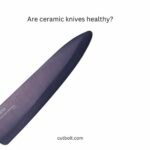
Yes, ceramic knives are safe to use when handled and maintained properly.
Are ceramic knives sharp?
Yes, ceramic knives are extremely sharp and can retain their edge for a long time.
Can ceramic knives rust?
No, ceramic knives are made from a non-metallic material and will not rust.
Are ceramic knives dishwasher safe?
No, ceramic knives should not be washed in a dishwasher as it can damage the blade.
Are ceramic knives good for cutting meat?
Ceramic knives are not recommended for cutting through bone or frozen foods but they are good for slicing meats, fruits and vegetables.
How do you sharpen a ceramic knife?
Ceramic knives should be sharpened with a diamond sharpening stone.
Can ceramic knives chip or break?
Ceramic knives can chip or break if dropped or if used to cut through hard materials like bone.
How do you clean a ceramic knife?
Ceramic knives should be cleaned with a mild detergent and a soft brush or cloth, then rinsed and dried thoroughly.
Can ceramic knives be used for chopping?
Ceramic knives are not recommended for chopping as they can chip or break when used for heavy-duty tasks.
How long do ceramic knives last?
The lifespan of a ceramic knife depends on usage and maintenance, but with proper care, a ceramic knife can last several years.
Conclusion: how safe are the ceramic knife?
In conclusion, ceramic knives have a lot of advantages for cooking, such as being lightweight, sharp, and resistant to rust and corrosion. However, they also have some drawbacks, such as being fragile, costly, and unable to sharpen.
Ultimately, the decision to use a ceramic knife for cooking should be based on personal preference and the needs of the user. Ceramic knives may be the perfect choice for some, while others may prefer to use a traditional steel knife.



